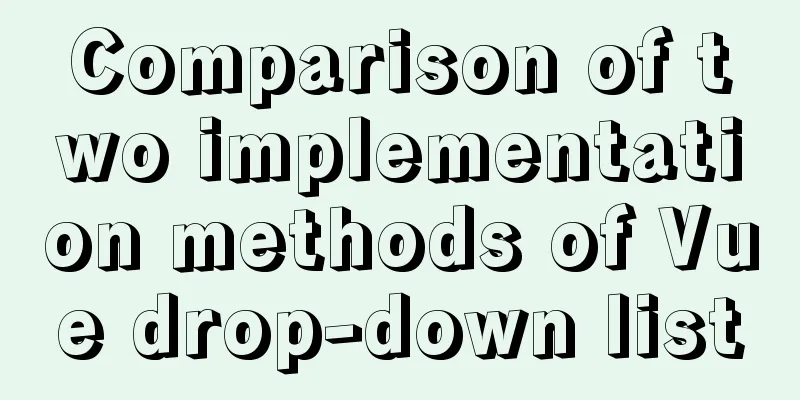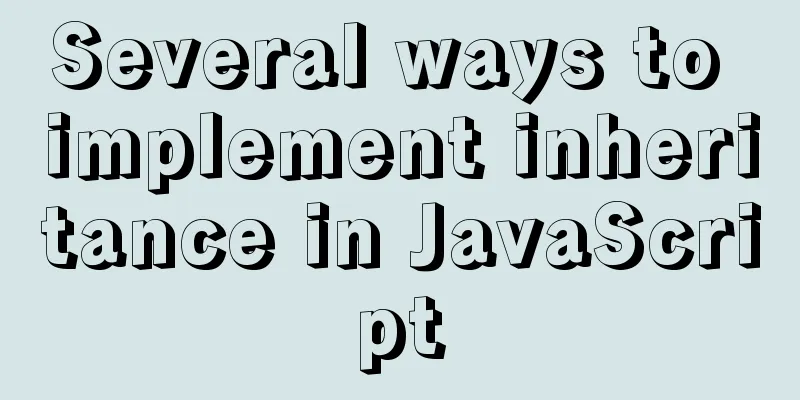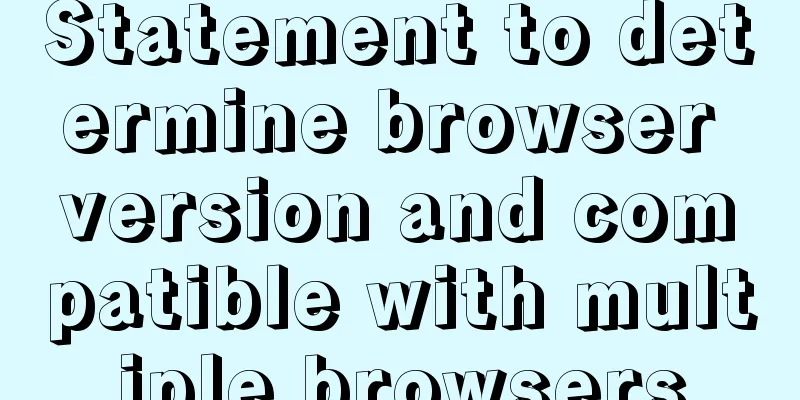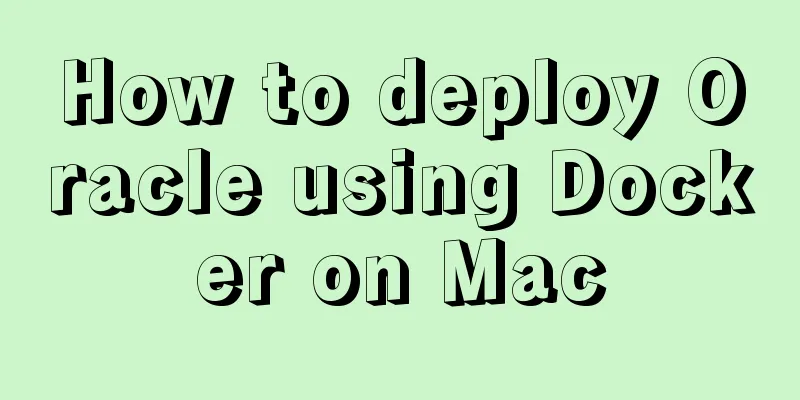Detailed explanation of Vue filter implementation and application scenarios

1. Brief IntroductionVue.js allows you to define your own filters, which can be used for some common text formatting. Filters can be used in two places: double curly brace interpolation and v-bind expressions (the latter is supported since 2.1.0+). Filters should be added at the end of a JavaScript expression, indicated by the "pipe" symbol:
<!-- in double curly braces -->
{{ message | filter }}
<!-- In `v-bind` -->
<div v-bind:msg="message | filter"></div>
Filter functions always receive the value of an expression as first argument. In the above example, the filter function will receive the value of message as the first argument. 1.1 Filters can be connected in series
{{ message | filterA | filterB }}
In this example, filterA is defined as a filter function that accepts a single parameter. The value of the expression message is passed into the function as a parameter. Then continue to call the filter function filterB, which is also defined to receive a single parameter, and pass the result of filterA to filterB. 1.2 Filters are JavaScript functions that can receive parameters
{{ message | filterA('arg1', arg2) }}
filterA is defined as a filter function that accepts three parameters. The value of message is the first parameter, the ordinary string 'arg1' is the second parameter, and the value of expression arg2 is the third parameter. 2. Define global filters in vue-cliSyntax: Vue.filter( filterName, ( ) => { return // data processing results} ) eg:
<div id="app">
<h3>{{userName | addName}}</h3>
</div>
<script>
// Parameter 1: is the name of the filter, that is, the processing function after the pipe character;
// Parameter 2: processing function, the parameters of the processing function are the same as above
Vue.filter("addName",(value)=>{
return "my name is" + value
})
let vm = new Vue({
el:"#app",
data:{
userName:"Xiaoming"
}
})
</script>
2.1 Actual development and use Global filters are often used for data modification. Usually we extract the processing functions and put them in a .js file.
// filter.js filelet filterPrice = (value) => {
return 'received' + value + 'yuan'
}
let filterDate = (value) => {
return value + 'day'
}
export default {filterPrice,filterDate}
Import the above filter.js file in main.js. You can also import the filter.js file in any component, but for global filters, it is best to define it in main.js. What is imported is an object, so use the Object.keys() method to get an array of keys, traverse the data, let the key be the name of the global filter, followed by the processing function corresponding to the key, so that the global filter can be used in any component:
//main.js
// Below are 2 ways to import, the first one is recommended import * as filters from './utils/filter/filter'
// import {filterPrice,filterDate} from './utils/filter/filter'
console.log(filters)
Object.keys(filters.default).forEach((item)=>{
Vue.filter(item,filters.default[item])
})
new Vue({
router,
store,
render: h => h(App),
}).$mount('#app')
3. Use global filters in components:
//test.vue
<template>
<div>
<input type="text" v-model="filterCount" >
<div>{{filterCount | filterPrice}}</div>
<div>{{filterCount | filterDate}}</div>
</div>
</template>
<script>
export default {
data(){
return {
filterCount:1500
}
},
}
</script>
3. Define local filters in vue-cli
//test.vue
<template>
<div>
<input type="text" v-model="filterCount" >
<div>{{filterCount | filterPrice}}</div>
<div>{{filterCount | filterDate}}</div>
</div>
</template>
<script>
export default {
data(){
return {
filterCount:1500
}
},
}
</script>
4. Common usage scenarios4.1 Format date (time) Scenario 1: Time sent from the backend: 2019-11-19T04:32:46Z Install moment.js
// main.js
import moment from 'moment'
// Define global filter - time format Vue.filter('format',function(val,arg){
if(!val) return;
val = val.toString()
return moment(val).format(arg)
})
//test.vue
<template>
<div class="filter">{{time | format('YYYY-MM-DD HH:MM:SS')}}</div>
</template>
<script>
export default {
data(){
return {
time:'2019-11-19T04:32:46Z'
}
}
}
</script>
SummarizeThis is the end of this article about Vue filter implementation and application scenarios. For more relevant Vue filter implementation and application content, please search 123WORDPRESS.COM's previous articles or continue to browse the following related articles. I hope everyone will support 123WORDPRESS.COM in the future! You may also be interested in:
|
<<: MySQL partitioning practice through Navicat
>>: Detailed tutorial on installing VirtualBox and Ubuntu 16.04 under Windows system
Recommend
How to configure Nginx load balancing
Table of contents Nginx load balancing configurat...
WeChat applet scroll-view implements a solution to duplicate data loading when pulling up
The scroll-view of WeChat applet has more bugs wh...
Detailed explanation of destructuring assignment syntax in Javascript
Preface The "destructuring assignment syntax...
Experience of redesigning the homepage of TOM.COM
<br />Without any warning, I saw news on cnB...
A very detailed explanation of Linux C++ multi-thread synchronization
Table of contents 1. Mutex 1. Initialization of m...
How to remove MySQL from Ubuntu and reinstall it
First delete mysql: sudo apt-get remove mysql-* T...
CSS to achieve Tik Tok subscription button animation effect
I was watching Tik Tok some time ago and thought ...
Docker image import and export code examples
Import and export of Docker images This article i...
VMware, nmap, burpsuite installation tutorial
Table of contents VMware BurpSuite 1. Virtual mac...
Color matching techniques and effect display for beauty and styling websites
Color is one of the most important elements for a...
How to use shtml include
By applying it, some public areas of the website c...
Vue3.0 project construction and usage process
Table of contents 1. Project construction 2: Dire...
MySQL performance optimization index pushdown
Index condition pushdown (ICP) is introduced in M...
Understand the rendering process of HTML pages in preparation for learning front-end performance optimization
I'm currently learning about front-end perform...
Example code for CSS to achieve horizontal lines on both sides of the text
This article introduces the sample code of CSS to...













